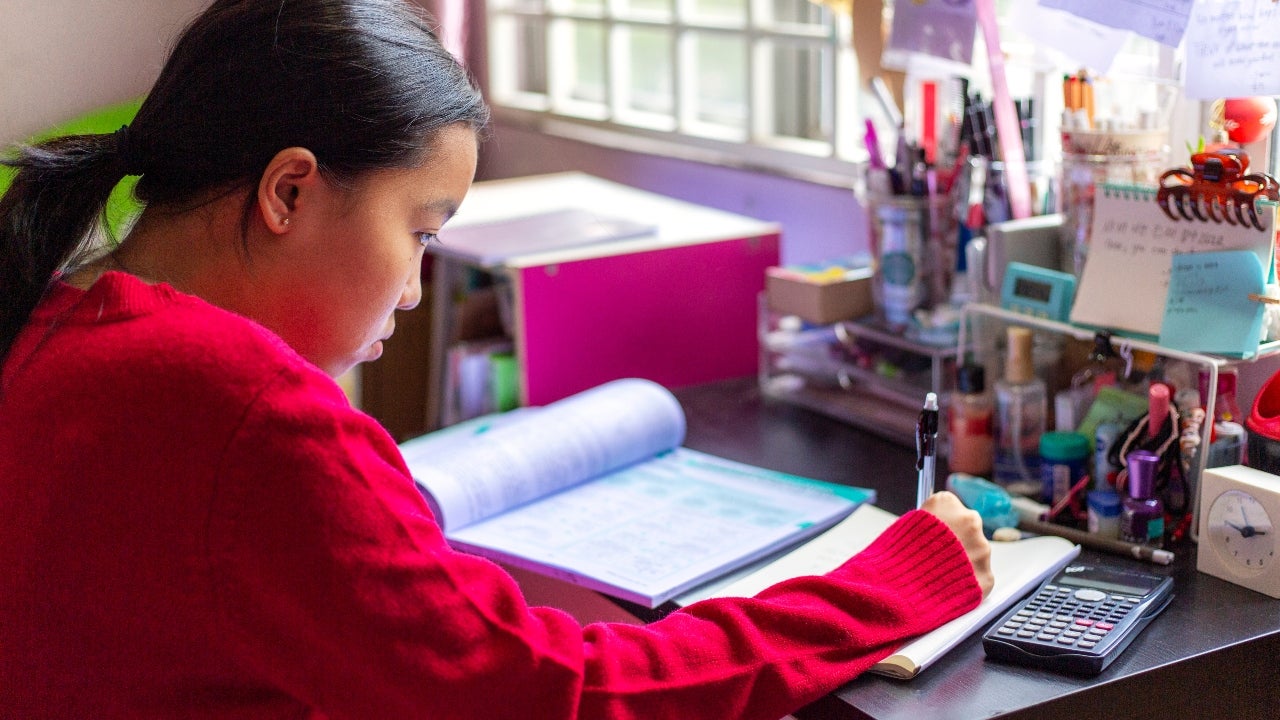Financial aid options for undocumented and DACA students

For most adolescents that come from underprivileged families, uncertainty about what they want to do after high school is very high. So, adding on top of it being undocumented, college becomes more of a luxury than a ‘need,’ so most of my cousins went straight into manual labor.— Jesus L.
Jesus L. didn’t borrow federal student loans or receive any public funding for his 2022 college diploma. As an undocumented immigrant who didn’t qualify for Deferred Action for Childhood Arrivals (DACA) status, he wasn’t eligible.
“I did have to get a job by not-so-legal means…to help pay for college along with my parents’ help,” says Jesus, who was brought to the U.S. at age 5 but missed a cutoff for DACA. “So, there were scares along the way that made me anxious and stressed out. At a certain point, I was living a double life that I had to constantly be aware of.”
Jesus isn’t just one of few.
According to the American Immigration Council, nearly 3 percent of the college population identifies as undocumented or DACA-eligible, making federal student aid out of reach. At the same time, says senior policy analyst Jill Desjean at the National Association of Student Financial Aid Administrators (NASFAA), Jesus’ experience “[might not be] typical — because it sounds like [he was] successful.”
Financial aid for undocumented students, DACA residents
Yes, undocumented immigrants and DACA residents can go to college. Figuring out how to pay for it is more complicated. It’s tricky because these groups aren’t considered eligible noncitizens for federal financial aid, which includes grants and work-study programs, in addition to government student loans.
The majority of students who need financial aid are cobbling together a financial aid package from many sources, and it's even more challenging for students that don't have access to the federal student aid funds because those are the biggest dollars.— Jill Desjean, NASFAA senior policy analyst
Learn more: How to fill out the FAFSA if your parents are undocumented immigrants
Do undocumented, DACA students qualify for in-state college tuition?
Colleges and universities typically advertise two tuition rates: in-state and out-of-state, which may include internationals. Students from neighboring states may qualify for a discounted price via a tuition reciprocity program. For instance, Jesus’ attendance at a nearby high school qualified him to pay 150 percent of the in-state tuition rate at one of its public universities.
| Type of school | Average annual tuition, fees (2024-2025) |
|---|---|
| Public, four-year school (in-state) | $11,610 |
| Public, four-year school (out-of-state) | $30,780 |
| Private, four-year school | $43,350 |
| Source: CollegeBoard | |
About half the country — 25 states and the District of Columbia — allow certain noncitizen students to qualify for in-state tuition, according to the National Immigration Law Center. On the flip side, noncitizens living in more restrictive states, where some don’t allow their immigrant students to attend public universities at all, could face sticker shock.
Desjean says that states and schools with fewer financial aid resources for immigrant and DACA students leave guidance counselors handcuffed. “No one is going to say, ‘You shouldn’t go [to this school],’ but someone might say, ‘Have you explored all of your options? Because this state and this school [doesn’t] have the resources for you…and [this] might put you in a challenging [position].'”
DACA-friendly and restrictive states
| Most comprehensive benefits* for DACA students | Most restrictions** for DACA students |
|---|---|
| California | Alabama |
| Colorado | Georgia |
| Connecticut | South Carolina |
| District of Columbia | |
| Hawaii | |
| Illinois | |
| Maryland | |
| Massachusetts | |
| Minnesota | |
| Nevada | |
| New Jersey | |
| New Mexico | |
| New York | |
| Oregon | |
| Rhode Island | |
| Texas | |
| Utah | |
| Virginia | |
| Washington | |
| Source: Higher Ed Immigration Portal |
*Comprehensive benefits include access to enrollment at public colleges and universities, resident tuition rates, state aid and scholarships.
**Restrictions include barring DACA students from resident tuition rates, enrollment at public institutions and state aid at public universities.
3 Ways to lower the cost of college as an undocumented or DACA student
Jesus patched together his own college financial aid package, through equal parts merit and luck. As one of the top 10 seniors from his high school, Jesus earned a full-ride scholarship to a nearby community college. Anonymous benefactors, who no doubt learned of his academic success, granted him a private scholarship that covered two-thirds of his senior year’s cost to attend a four-year university. He found work to foot the remaining bill.
1. Private scholarships
Just like grants, scholarships are a form of gift aid that can be used to cover tuition and other college expenses, including room and board, books and technology. As long as you follow a scholarship’s rules — maintaining attendance, for example — you don’t have to repay scholarship funds.
Next step: Though your school’s financial aid office would be a resourceful place to start, proactively search for organizations specializing in immigrant and DACA student scholarships, such as TheDream.US and Golden Door Scholars. You can also do a search based on your personal characteristics — scholarships for Latino students, for example.
2. State financial aid
Some states award grants, institutional scholarships and other forms of aid to DACA-eligible and other noncitizen students who complete a special form. Think of it as the state’s version of the FAFSA.
Next step: To find out whether your state offers these opportunities, visit the NASFAA directory, or contact your state’s higher education authority via the Department of Education.
Bankrate’s take: Even though your residency status may preclude you from federal financial aid, consider completing the FAFSA as a DACA student (if you have a Social Security Number). That’s because some states and schools use your FAFSA results to determine your eligibility for non-federal student aid.
3. Private student loans
Securing a private student loan as an undocumented or DACA student may be a tall order. You’ll likely need a creditworthy cosigner with citizenship or permanent residency to be approved for the loan. Some lenders, like MPower Financing, will aim to serve noncitizen borrowers while others, like SoFi, accept DACA-resident applicants.
Next step: Exhaust all other options before resorting to education debt, including researching lower-cost schools and working part-time, like Jesus. If you must borrow, shop around for quotes to secure the best terms and interest rates available to you.
Bottom line
Attending — and affording — college as a noncitizen can be tough. But choosing a lower-cost school, applying for private scholarships and talking to your financial aid counselor can help. Better yet, if you live in a state that caters to undocumented and DACA students, you might qualify for an in-state tuition rate. While you’re at it, consider ways to attend college for free.
Why we ask for feedback Your feedback helps us improve our content and services. It takes less than a minute to complete.
Your responses are anonymous and will only be used for improving our website.
You may also like

Should you refinance federal student loans?

Types of private student loans and how to choose

What to do if you didn’t get enough financial aid




